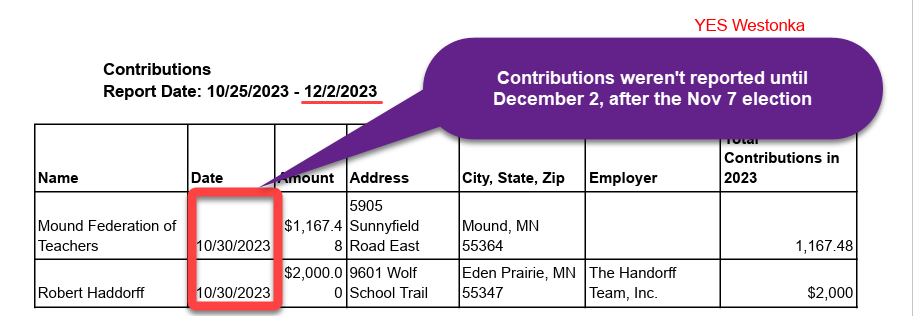I can imagine the discussion last fall among YesWestonka leadership about how to hide from voters who the largest contributors were to their organization, which supported the recently passed bond referendum last November: “We can’t let the public know the majority of our donations will be coming from unidentified cash donors, the teacher’s union and one other donor. That wouldn’t look good. How can we conceal that from voters without getting in trouble?”
“Easy…don’t report the largest contributions until AFTER the election. That way voters won’t know that the teacher’s union and one other donor were the two largest contributors to YesWestonka. Just wait and report them in December.”
Done. The campaign finance reports for YesWestonka show the two largest contributions to their campaign committee weren’t reported until after the election:

The primary purpose of filing campaign finance reports is to inform voters where contributions come from and identify sources that may be influencing campaign committees. In this case the identities of YesWestonka’s largest donors were hidden from voters.
The campaign committee also took in close to $3,000 from unidentified cash donors. That’s an alarming number given it amounts to approximately a third of their total campaign revenue.
For a referendum that barely squeaked by, it does make one wonder if the election outcome might have been different had voters known who was bankrolling the effort. Unfortunately, it’s not even illegal what they did. But it is deceitful and it’s concerning these deceptive practices aren’t being called out in the news media.